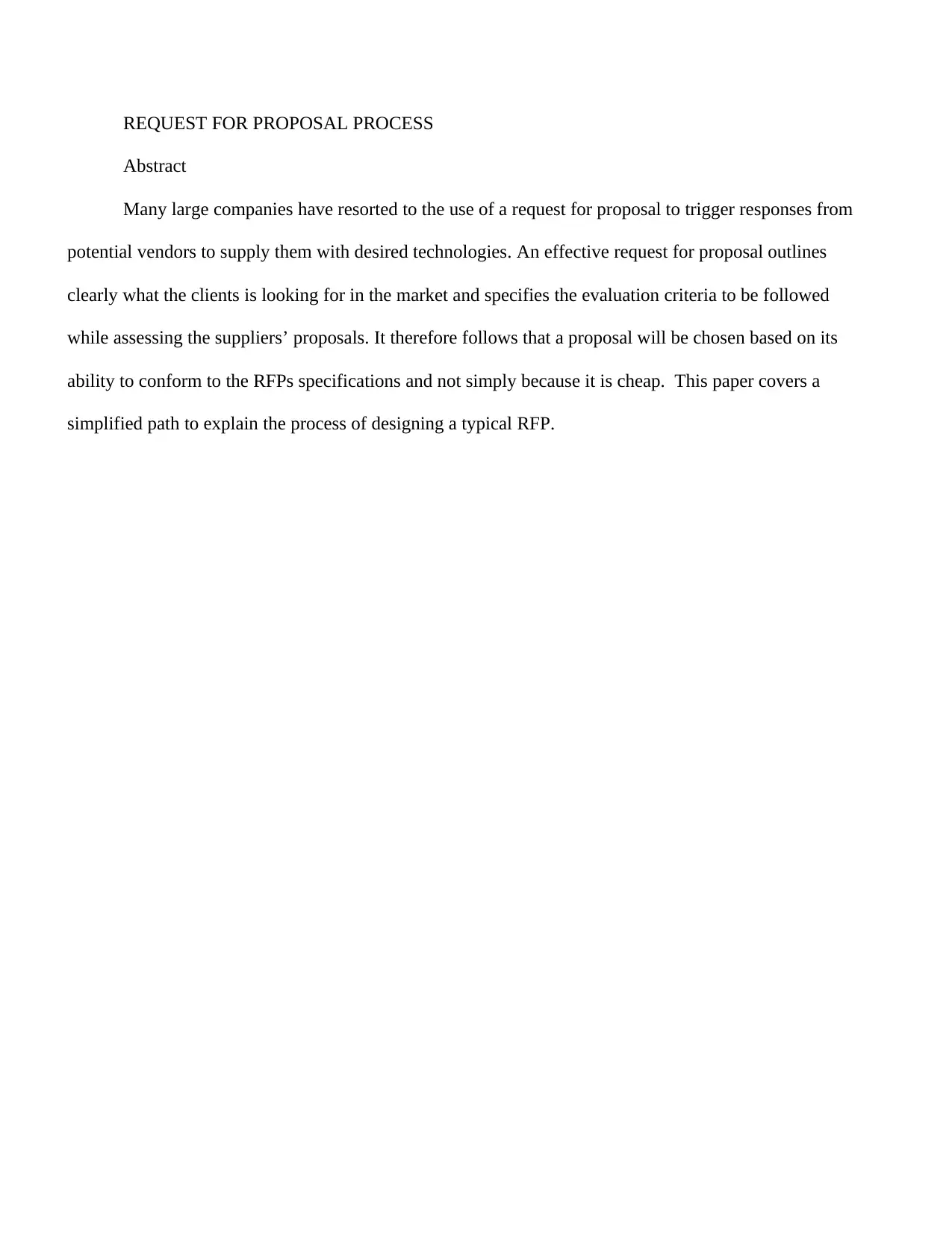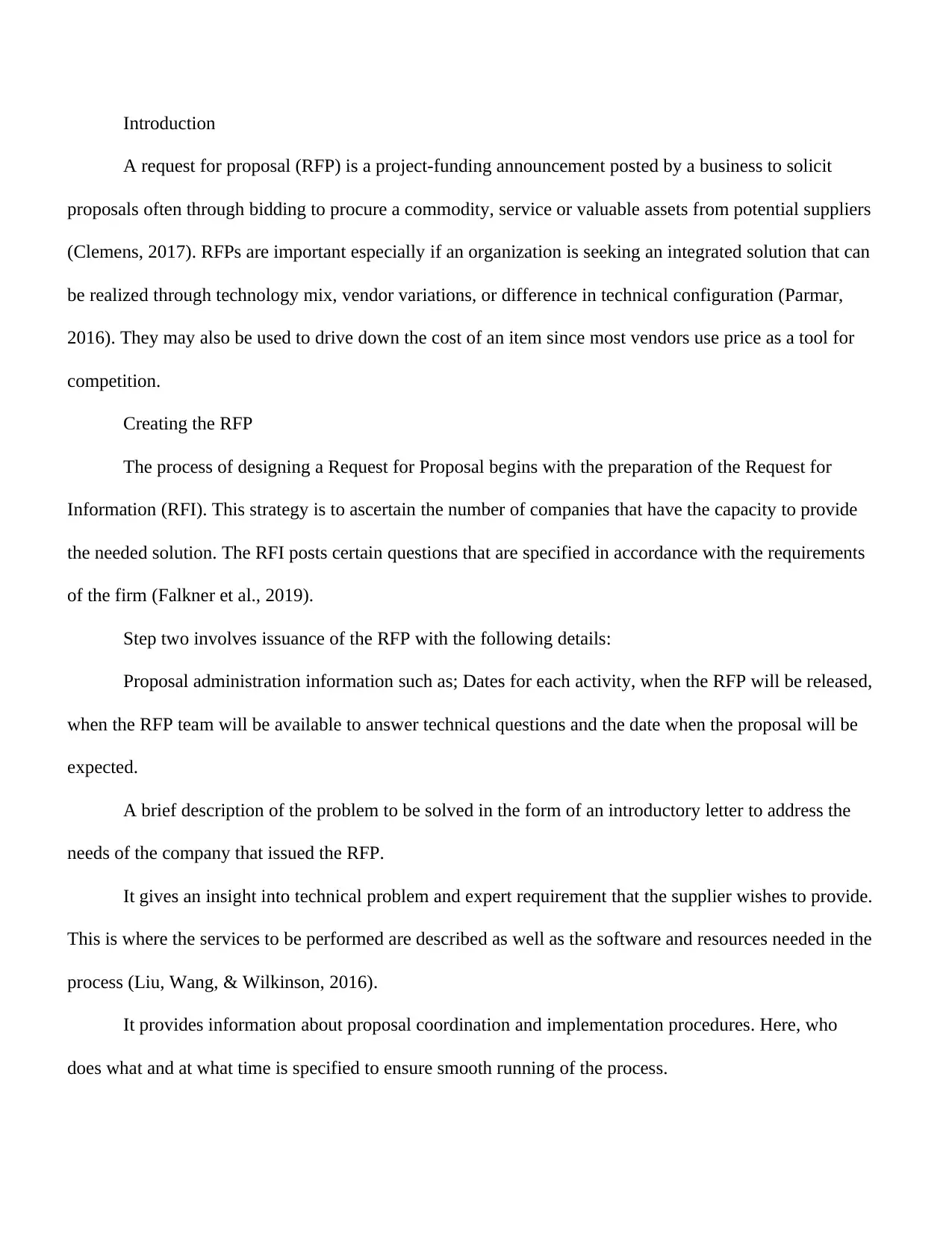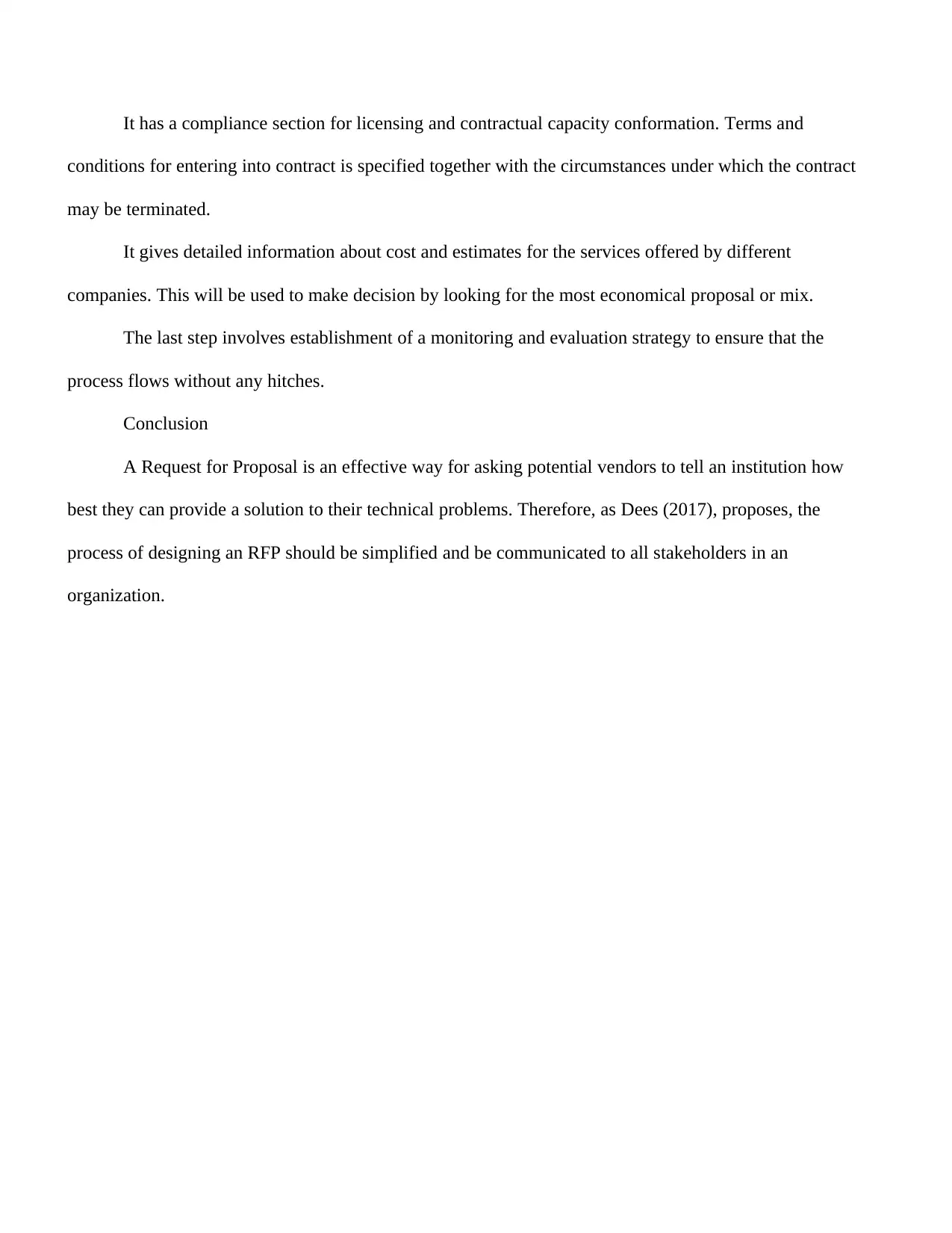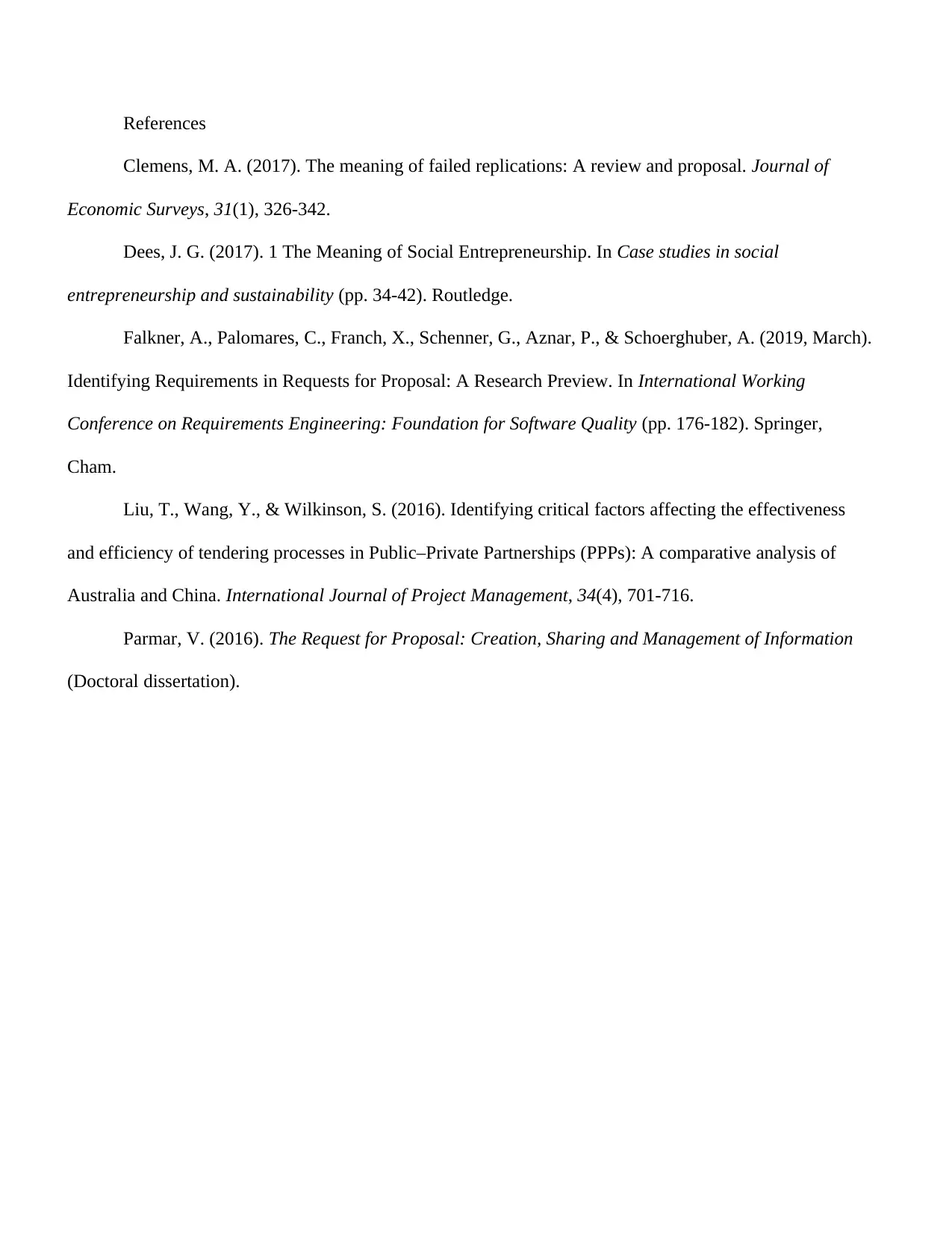Comprehensive Guide to the Request for Proposal (RFP) Process
VerifiedAdded on 2022/11/29
|4
|779
|171
Report
AI Summary
This report provides a detailed overview of the Request for Proposal (RFP) process, a crucial mechanism for businesses to solicit proposals from potential vendors. It begins by explaining the purpose and significance of RFPs, especially for complex projects requiring integrated solutions. The report then outlines the key steps in designing an RFP, starting with the Request for Information (RFI) to gauge vendor capabilities. It details the essential components of an RFP, including proposal administration information, problem descriptions, service specifications, proposal coordination, compliance sections, cost estimates, and monitoring strategies. The report emphasizes the importance of a simplified and well-communicated RFP process to ensure effective vendor selection. The conclusion reinforces the RFP's effectiveness in addressing technical challenges and highlights the need for stakeholder involvement in the process.
1 out of 4











![[object Object]](/_next/static/media/star-bottom.7253800d.svg)